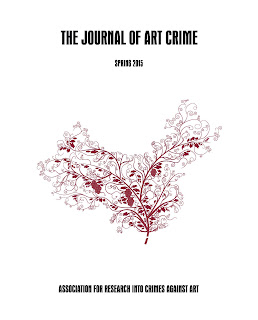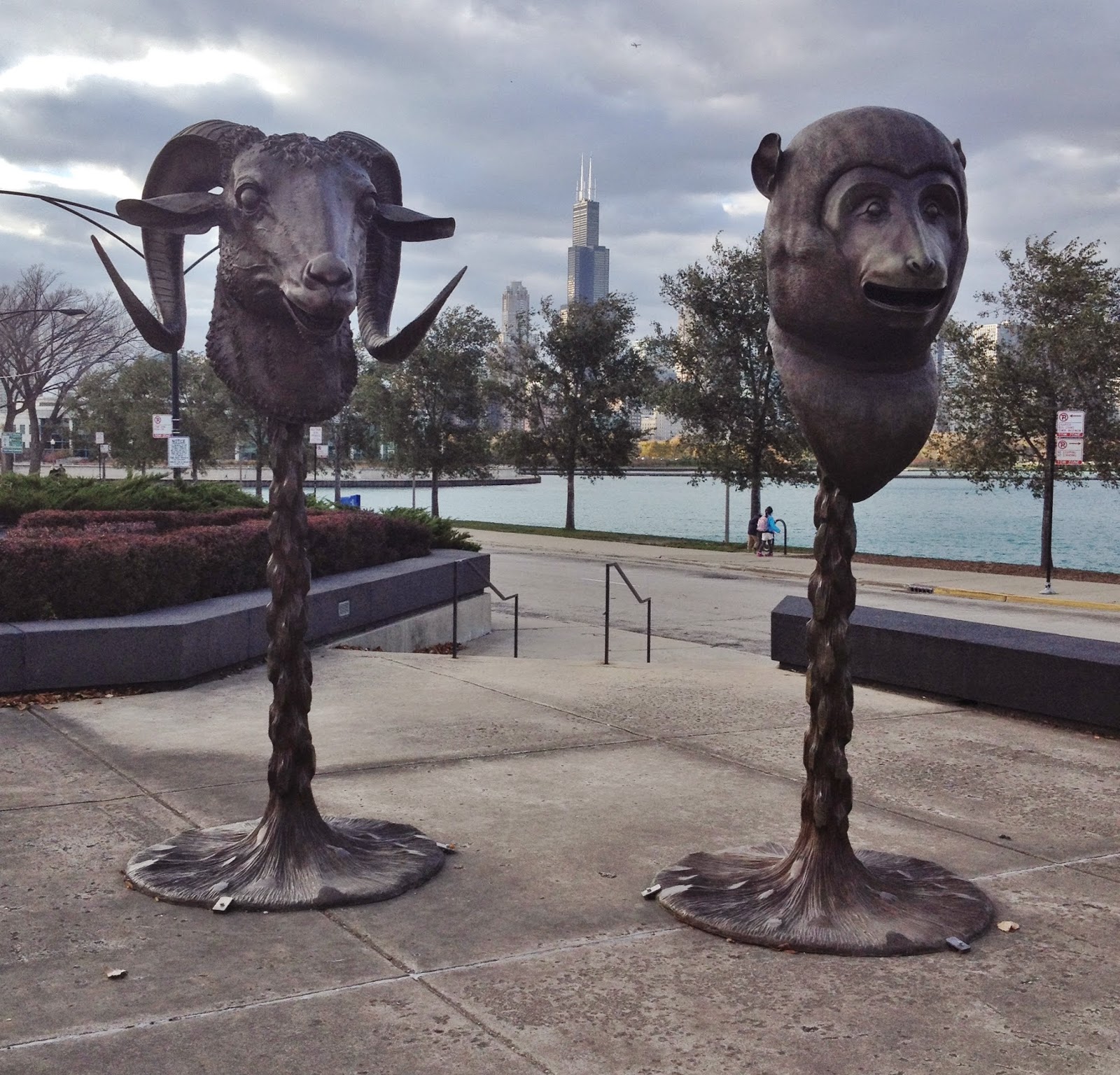 |
| Toby Bull |
ARCA’s Art and Cultural Heritage Conference (June 21-23,
2013), held in the ancient Umbrian town of Amelia, began with cocktails for
presenters and students at Palazzo Farrattini on Friday evening. The next
morning, The conference opened at the Chiostro Boccarini with an
introduction to a panel moderated by Marc Balcells Magrans, a Fulbright scholar
and criminal lawyer.
Toby Bull, a Senior Inspector with the Hong Kong Police
Force since 1993, presented “Property of a Hong Kong Gentleman, Art Crime in
Hong Kong – Buyer Beware”. Mr. Bull, a Fine Arts graduate, art historian and a
qualified art authentication expert, recently founded TrackArt, an Art Risk
Consultancy based in Hong Kong. In 1996, he attained detective status and is
currently working within the Marine Police, whose role in the main is in
dealing with anti-smuggling. The Hong Kong Police Force has no art crime squad,
but has given Mr. Bull permission to lecture and do art consultancy work
through his private consulting firm. Mr. Bull has been one of ARCA’s longest supporters
and, like many of the lecturers & presenters on the course, was one of the
contributors to ARCA’s first book, Art & Crime: Exploring the dark side of
the art world edited, by Noah Charney.
Inspector Bull discussed the black-market antiquities trade
and the free port of Hong Kong, often used as a ‘way station for much of
China’s exported artifacts on their journey to collections abroad:
Looted antiquities are typically
smuggled across porous borders, often acquiring fictitious provenance along the
way. Documents claiming false authenticity and providing assurances that the
items have not been looted, as well as outright fakes of antiquities are also
common occurrences.
The worldwide popularity and high
prices for Chinese archaeological artifacts have encouraged illegal excavation
and smuggling of cultural property. Although Chinese authorities have
intensified their efforts to crack down on smuggling and illicit excavation, it
continues practically unabated. This huge demand for Chinese cultural artifacts
has caused serious damaged to China’s cultural heritage.
Inspector Bull described the extent of the problem of looted
artifacts in Hong Kong and the issue of fakes. He also raised the question as
to whether or not “greater due diligence or some form of regulation amongst the
local dealers could be brought in to help diminish and eventually stop the
trade in illicit antiquities.”
According to Inspector Bull, criminal networks know how to
move stolen art or illicitly dug-up antiquities because they already have the
knowledge of the best ‘routes’ to get the illicit merchandise across the HK
border, thanks in large part to their experience from drug trafficking.
"The
idea that these are art-loving criminals is risible, as they are only
interested in the money that comes from their various nefarious activities," Inspector Bull said. "The
trade in antiquities (be they real or fake) is part of highly organized
criminal enterprise structures. The people perpetrating these crimes are your
commonplace criminals – no more, no less, but businessmen too, as they have
realized that there is still a lot of money to be made in this type of
trafficking and far less harsh penalties if caught than with drugs, for
example. China is a source nation,
bleeding its cultural heritage to the rich market nations. Tomb robbing in
China involving diggers, equipment, and fences (middleman to sell the objects)
and requires a multi-layered network.
High priced art is even used as a tool in bribing officials
in China, according to Bull. "In 1997, many art dealers fled Hong Kong fearing
the change of sovereignty, believing the harsh and strict export embargo of
the Chinese system would be applied to Hong Kong and kill the trade," he said. "Once the announcement was made that Chinese laws on the protection of art
relics would not be applied to Hong Kong (the world’s 3rd busiest
cargo port), business carried on unabated with the reputation for Hong Kong being
the place to buy Chinese artifacts and antiquities solidified.
However, that
brings with it the problems of Hong Kong being a Freeport: “If it’s (the
artifact) not proven to be stolen, objects can be legally exported, changing
from illicit to licit,” Inspector Bull said. “Once entered into auction
catalogues, the objects are often shown to be from a private collection in Hong
Kong.”
Inspector Bull highlighted the problematical way that the
police regard art crime and their lack of proper referencing within databases,
making true statistics nigh on impossible to get; a frustrating fact for any
criminologist looking to study this subject. Other incidents of art crime
involve fake authenticity certificates for objects; smuggling paintings back
into China to avoid taxes; and smuggling of fake objects. Inspector Bull also
explained the correlation between art crime and money laundering and "the
surprising, but sad fact", of how Hong Kong was woefully under prepared and at
risk – despite its reputation as a top international finance sector with very
tough anti-money laundering measures in place for the financial sector (just
not for the totally unregulated art sector).
Inspector Bull conducted some of his own original research:
“Out of 25 mainstream galleries in the main antiques area of Hollywood Road in
Hong Kong, only four returned a 14-question survey questionnaire about the
condition of the art market – and even those four that did answer did so with
rather spurious replies,” Inspector Bull said. “There is absolutely no interest
from the art trade to self-regulate, nor is there any lead from the Government
to clamp down (or even recognize) the problem. There is simply too much money
at stake. The Hong Kong Government is now looking to make the city an ‘art hub’
– seen by the recent arrival of the mega Art Basel exhibition in May. There is
a real danger that more genuine smuggled pieces will find their way in Hong
Kong, as well as more fakes flooding the market”.
With this in mind, one of the
aims of TrackArt is education to
the art market & those closely tied to it to highlight the problems that
were addressed in Inspector Bull’s insightful and entertaining presentation :
he had brought with him from Hong Kong a “1st Class Fake” of a Tang
Dynasty ceramic horse bought especially for its inconsistencies by Bull to be
used as a lecture prop and which was passed around the audience – showing,
indeed, the dangers of buying Chinese antiquities in Hong Kong. "Buyer Beware!
Yes, most definitely."
 antiquities looting,China,Christie's,Egypt,Napoleonic Law
antiquities looting,China,Christie's,Egypt,Napoleonic Law
 1 comment
1 comment
 antiquities looting,China,Christie's,Egypt,Napoleonic Law
antiquities looting,China,Christie's,Egypt,Napoleonic Law
 1 comment
1 comment









